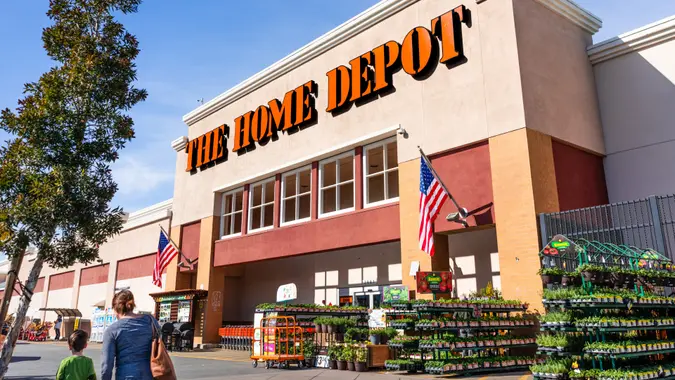Don’t Buy These 7 Grocery Items With SNAP Benefits This Summer

Commitment to Our Readers
GOBankingRates' editorial team is committed to bringing you unbiased reviews and information. We use data-driven methodologies to evaluate financial products and services - our reviews and ratings are not influenced by advertisers. You can read more about our editorial guidelines and our products and services review methodology.

20 Years
Helping You Live Richer

Reviewed
by Experts

Trusted by
Millions of Readers
Money is tight, and that makes budgeting for groceries all the more difficult — especially with rising inflation. Oftentimes, SNAP benefits just don’t cover the whole bill. For example, when abiding by the U.S. Department of Agriculture’s Thrifty Food Plan, the average monthly cost of groceries for a family of four was $970.50, as of April 2023.
However, there are still ways to fill your shopping cart with a balanced mix of food your family enjoys that will also keep them healthy. It might seem like an unnecessary hassle, but adjusting your grocery list to include foods generally cheaper and/or in season during the summer months can save you a lot of money.
This might require some extra effort on your part, as you may need to rework or find new recipes that are a staple in your home. However, being able to stick to your grocery budget will make it worthwhile.
Citrus Fruits
When temperatures are warm, you might crave citrus fruits, but Katie Roberts, a consumer analyst with DealNews.com, said they’re typically in season during the winter months.
“Abundant in-season produce tends to have higher odds of being discounted,” she said. “Oranges, grapefruits and other citrus fruits may be at full price during the summer, because they’re out of season.”
Instead, consider switching to berries for the summer. Blackberries, blueberries, raspberries and strawberries are all in season during the summer months, according to the USDA.
Broccoli
If you want broccoli this summer, it’s probably more economical to stick with the frozen variety.
“Fall through spring tends to be prime broccoli season, and the time when you can expect it to be most abundant in grocery stores,” she said. “With broccoli being a cool-season crop, grocery stores may not have as much of it during the summer, so prices could be higher.”
If you still want to put a fresh green vegetable on your family’s plates this summer, consider green beans, lima beans or zucchini. These are all in season during the summer.
Candy
“Summer lacks big candy-focused holidays like Halloween, Valentine’s Day and Easter,” Roberts said. “Right after these holidays end, deep discounts on seasonal candy show up — think 50% off and up to 70% off or more a few days later.”
Since summer doesn’t have candy-focused holidays, she said shoppers aren’t able to find these rock-bottom prices.
Certain Root Vegetables
Low in calories and high in antioxidants, root vegetables are filled with vitamins and minerals, according to Harvard Health Publishing. They’re largely considered a great source of nutrients, but many are not in season during the summer months.
Specifically, onions, sweet potatoes and yams, turnips, beets, potatoes, rutabagas and parsnips are in season during the fall and winter months. However, carrots are in season, so they shouldn’t have a sky-high price tag.
Lettuce
Summer temperatures can make salads more appealing than ever, but the main ingredient is out of season during the warmest months of the year. Spring and fall are prime months for lettuce.
If you’re thinking about substituting your favorite lettuce variety for spinach, that won’t work either. This leafy green vegetable also enjoys peak season during the spring and fall months.
Instead, consider making a veggie tray with in-season produce like carrots, celery, cucumbers and tomatoes.
Mushrooms
They’re technically a fungus, but mushrooms can offer several health benefits. This may include lowering your risk of chronic disease, reducing your sodium intake, keeping your cholesteryl levels low and supporting a healthy immune system, according to UCLA Health.
A versatile ingredient, you might be tempted to pick up fresh mushrooms to add to anything from pizza to pasta this summer, but this probably isn’t the most economical choice. Mushrooms are in season during the spring and fall months, so hold off until then.
Don’t worry — plenty of other versatile substitutes are in-season, including bell peppers, eggplant and summer squash.
Pineapples
One cup of pineapple chunks offers a host of vitamins and minerals, including vitamin C, manganese, fiber, B vitamins and a variety of minerals, according to the Cleveland Clinic. The health benefits, combined with its general deliciousness, might make you tempted to pick up some fresh pineapple at the store, but it’s currently out of season.
In fact, summer is the only season pineapple is out of season. However, if you have a craving, it’s unlikely the canned varieties will be pricier during the summer months.
More From GOBankingRates
 Written by
Written by  Edited by
Edited by 

























